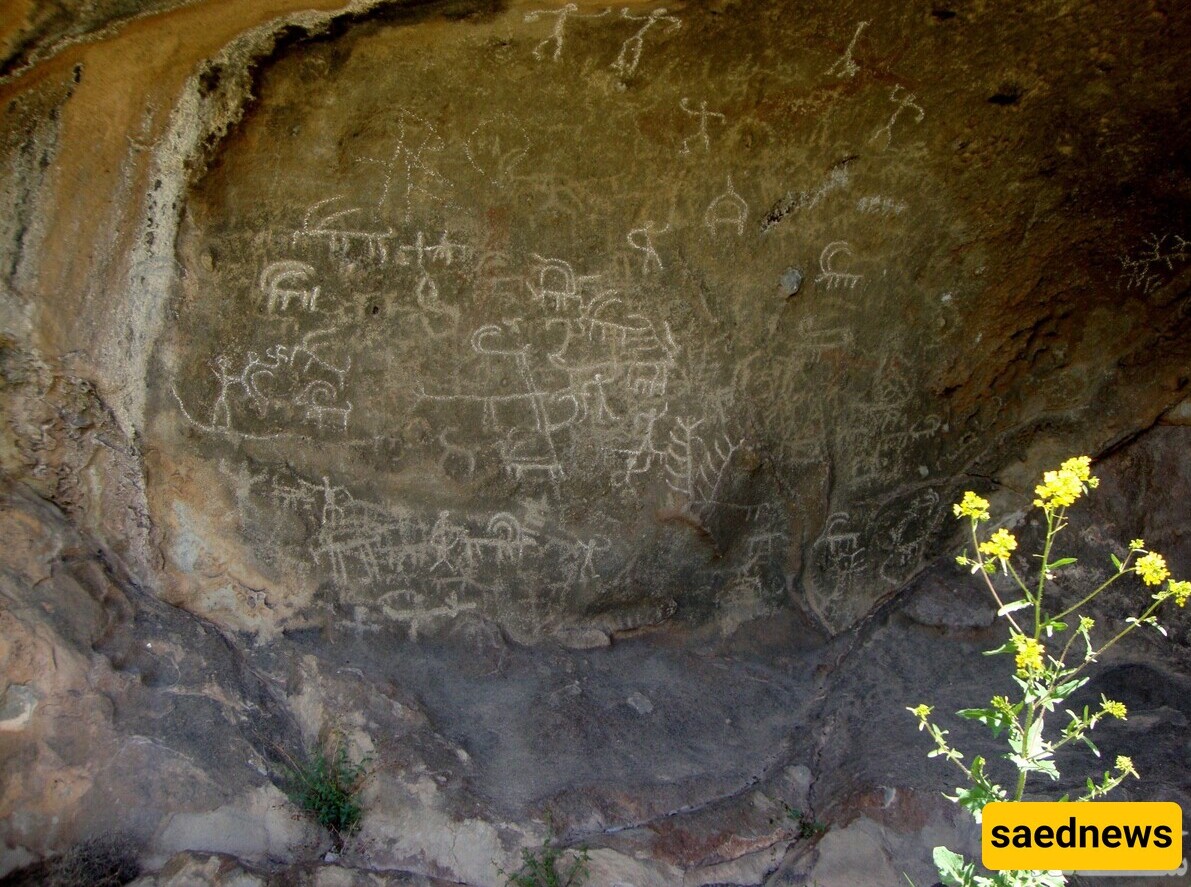Rock art, or petroglyphs, refers to a collection of artworks created on rocks by humans, which includes engravings, symbols, and images. The relationship between humans and their need to portray their thoughts through drawing dates back tens of thousands of years.

Rock art or petroglyphs are a form of artistic tradition that has persisted for thousands of years. It seems that humans recognized rocks as the first medium to record their art, experiences, and emotions. Although humans have used other materials like wood and bone for this purpose—materials which have disappeared over time—rocks, due to their nature, have preserved these artworks, which are still visible in various parts of the world. Researchers consider the development of petroglyphs to coincide with the beginning of human life outside caves.

Why did humans use rock art or petroglyphs? The images and engravings recorded on rocks reflect the thoughts and emotions of humans from various historical periods, depicting everyday life events such as ritual ceremonies, battles, nature, and more. Geometric, symbolic, and conceptual signs are also found in petroglyphs across different regions of the world. However, the frequent depictions of hunting scenes emphasize the significance of this theme in different periods of human life.
Petroglyphs can be found in various regions of the world, including Iran. These images might represent certain cultures, beliefs, religions, and philosophies of the people in a specific region during a certain time period, making them valuable for historical and cultural studies.

Rock Art or Petroglyphs Around the World and in Iran As mentioned, petroglyphs are found in many parts of the world. Some of these works date back tens of thousands of years. For instance, more than 300 sites with petroglyphs, containing around one million images, have been discovered in Africa, many of which are over 100,000 years old. Other well-known areas with petroglyphs include southern Algeria, southern Morocco, Fezzan in Libya, Air and Tenere in Nigeria, Tibbesti in Chad, the Ethiopian highlands, Dharati Shit in Mauritania, and Mozambique in Angola. Some examples of rock art in Australia are more than 60,000 years old, which is roughly the duration of human habitation in the continent.
Rock art or petroglyphs are also found in various regions of Iran. So far, petroglyphs have been discovered in 21 provinces across the country. The province of Lorestan holds the oldest and most abundant petroglyphs in Iran. The oldest petroglyph discovered in Iran is found in a cave in Lorestan, dating back over 40,000 years. The largest petroglyph site in Iran is in Timreh, Golpayegan, which contains more than 38,000 petroglyphs.
The motifs found in the petroglyphs of Iran include:
Human figures in various states such as running, fleeing, fighting, standing, etc.
Animal figures
Geometric and symbolic designs
Plant motifs
Composite images (human and animal)
Various methods were used to create these motifs, and different carving and engraving tools were employed. In Iran, since most petroglyphs are found on sedimentary rocks, which are relatively soft, this art form has been practiced throughout various historical periods.
Viewing these petroglyphs and rock art makes one reflect. The relationship between humans and their tool, the need to depict their thoughts, has a history of tens of thousands of years. This means that humans have long sought to leave a trace of themselves in the world, a process that continues today.


